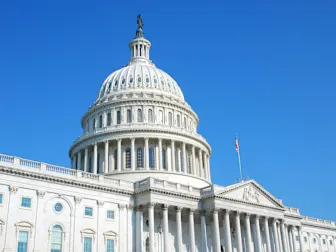The stablecoin legislation still being pushed in Congress risks sowing the seeds of a financial crisis
- May 15, 2025
- Category:

Right now, American consumers and businesses alike are experiencing economic pain and massive uncertainty thanks to the Trump administration’s policies, including costly tarrifs , and the reckless gutting of government programs and services and rules designed to protect the stability of our financial system . Signs of an economic slump may have abated somewhat, but concern is still warranted. Meanwhile, the value of the U.S. dollar on the world stage continues to fluctuate .
This seems like a particularly bad time for Congress to consider legislation that could further undermine our economy and cheapen the U.S. dollar. Yet, some members of the House and Senate have been doing just that by pushing forward legislation that would create a weak regulatory regime for stablecoins : digital assets or “cryptocurrency” with a value claimed to be reliably equivalent to official currency like the American dollar.
The absurdity of this legislative move—now or perhaps ever—is finally dawning on a group of Democrats in the Senate, some of whom previously supported the legislation. Their wise choice last week to at least slow down this legislation was triggered in part by a desire to disassociate themselves from what lawmakers like Sen. Lisa Blunt Rochester see as the president’s self-dealing attempts to personally benefit from a new crypto regime, including by selling his meme coins to foreign-based investors who hope to gain favor with the administration.
Stablecoin risks
Despite their name, stablecoins can be extremely volatile . Their trading values fluctuate and some have even collapsed . Bad actors have used them for money laundering and to finance sex trafficking, terrorism, and other criminal activities. They’ve also been used in fraud .
The proposed legislation—the GENIUS Act in the Senate and the STABLE Act in the House—doesn’t change the essential truth about stablecoins and other crypto assets. Namely, while many transactions may be listed on a blockchain publicly accessible via the internet, others occur off-chain, effectively in private. As for on-blockchain transactions, there are thousands of blockchains, making it complex and time-consuming to conduct related searches across them all, especially for banks or other firms that regularly conduct due diligence as part of their business. And the people behind the transactions aren’t disclosed on the blockchain , so the viewer knows nothing about who engaged in the transactions or for what purposes.
The crypto industry wants to keep it that way. Their allies in Congress have rejected proposals to ensure stablecoin issuers and exchanges follow the same rules as banks.

